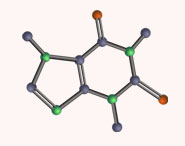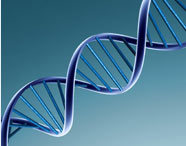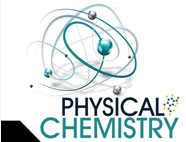


 علم الكيمياء
علم الكيمياء 
 الكيمياء التحليلية
الكيمياء التحليلية 
 الكيمياء الحياتية
الكيمياء الحياتية 
 الكيمياء العضوية
الكيمياء العضوية 
 الكيمياء الفيزيائية
الكيمياء الفيزيائية
 الكيمياء اللاعضوية
الكيمياء اللاعضوية 
 مواضيع اخرى في الكيمياء
مواضيع اخرى في الكيمياء
 الكيمياء الصناعية
الكيمياء الصناعية |
أقرأ أيضاً
التاريخ: 23-10-2019
التاريخ: 5-8-2018
التاريخ: 21-11-2019
التاريخ: 28-6-2019
|
Chemists often say things like ‘the pKa of triethylamine is about 10.’ (It’s actually 11.0 but 10 is a good number to remember for typical amines). This may surprise you as triethylamine has no acidic hydrogens. What they mean is of course this: ‘the pKa of the conjugate acid of triethylamine is about 10.’ Another way to put this is to write ‘the pKaH of triethylamine is about 10.’ The subscript ‘aH’ refers to the conjugate acid.
When a molecule is both acidic and basic, as for example aniline, it is important to work out which pKa is meant as again chemists will loosely refer to ‘the pKa of aniline is 4.6’ when they mean ‘the pKa of the conjugate acid of aniline is 4.6.’ Aniline is much less basic than ammonia or triethylamine because the lone pair on nitrogen is conjugated into the ring and less available for protonation.
But for the same reason, aniline is also more acidic than ammonia (pKa 33) and has a genuine pKa in which one of the protons on nitrogen is lost. So, we can say correctly that ‘the pKa of aniline is about 28.’ Just be careful to check which pKa is meant in such compounds. The full picture is:
The pKa associated for protonation of piperidine, a typical secondary amine, is about 13. The equivalent pKa for protonation of pyridine—a compound with a similar heterocyclic structure, but with its lone pair in an sp2 rather than an sp3 orbital, is only 5.5: pyridine is a weaker base than piperidine (its conjugate acid is a stronger acid). Nitriles, whose lone pair is sp hybridized, are not basic at all. Lone pairs with more p character (sp3 orbitals are 3/4 p, while sp orbitals are 1/2 p) are higher in energy—they spend more time further from the nucleus—and are therefore more basic. Amides are very different because of the delocalization of the lone pair into the carbonyl group. This makes amides more acidic but less basic and protonation occurs on oxygen rather than nitrogen. Amides have pKa values of around 15 when they act as acids, making them some 1010 times more acidic than amines. The pKa of protonated amides is around 0, making them some 1010 times weaker as bases.
If we replace the carbonyl oxygen atom in an amide by nitrogen, we get an amidine. Amidines are conjugated, like amides, but unlike amides they are stronger bases than amines, by about 2–3 pKa units, because the two nitrogens work together to donate electron density onto each other. The bicyclic amidine DBU is often used as a strong organic base (see Chapter 17).
But the champions are the guanidines, with three nitrogens all donating lone pair electrons at once. A guanidine group (shown in green) makes arginine the most basic of the amino acids.



|
|
|
|
لشعر لامع وكثيف وصحي.. وصفة تكشف "سرا آسيويا" قديما
|
|
|
|
|
|
|
كيفية الحفاظ على فرامل السيارة لضمان الأمان المثالي
|
|
|
|
|
|
|
قسم التربية والتعليم يطلق الامتحانات النهائية لمتعلِّمات مجموعة العميد التربوية للبنات
|
|
|